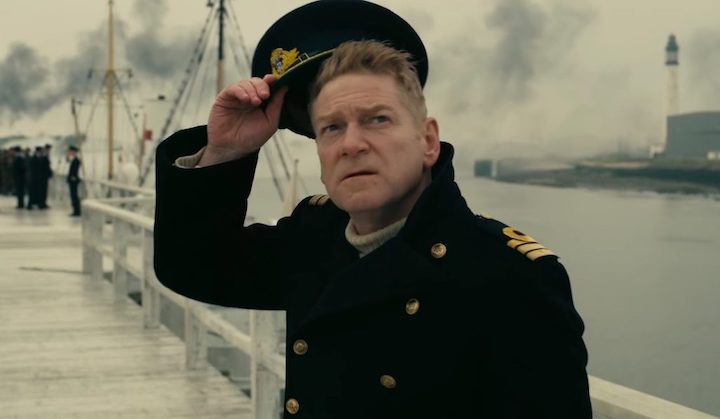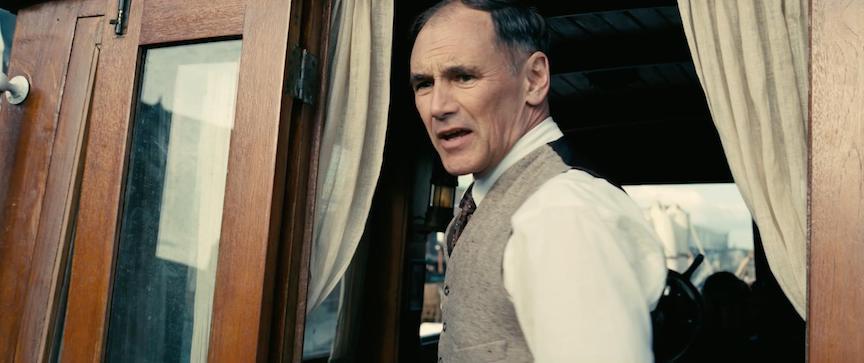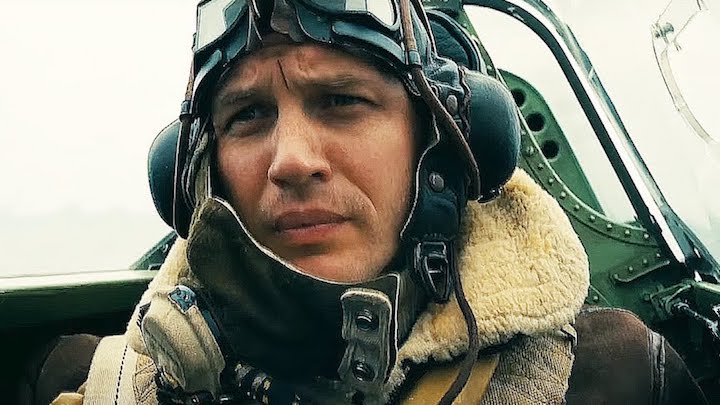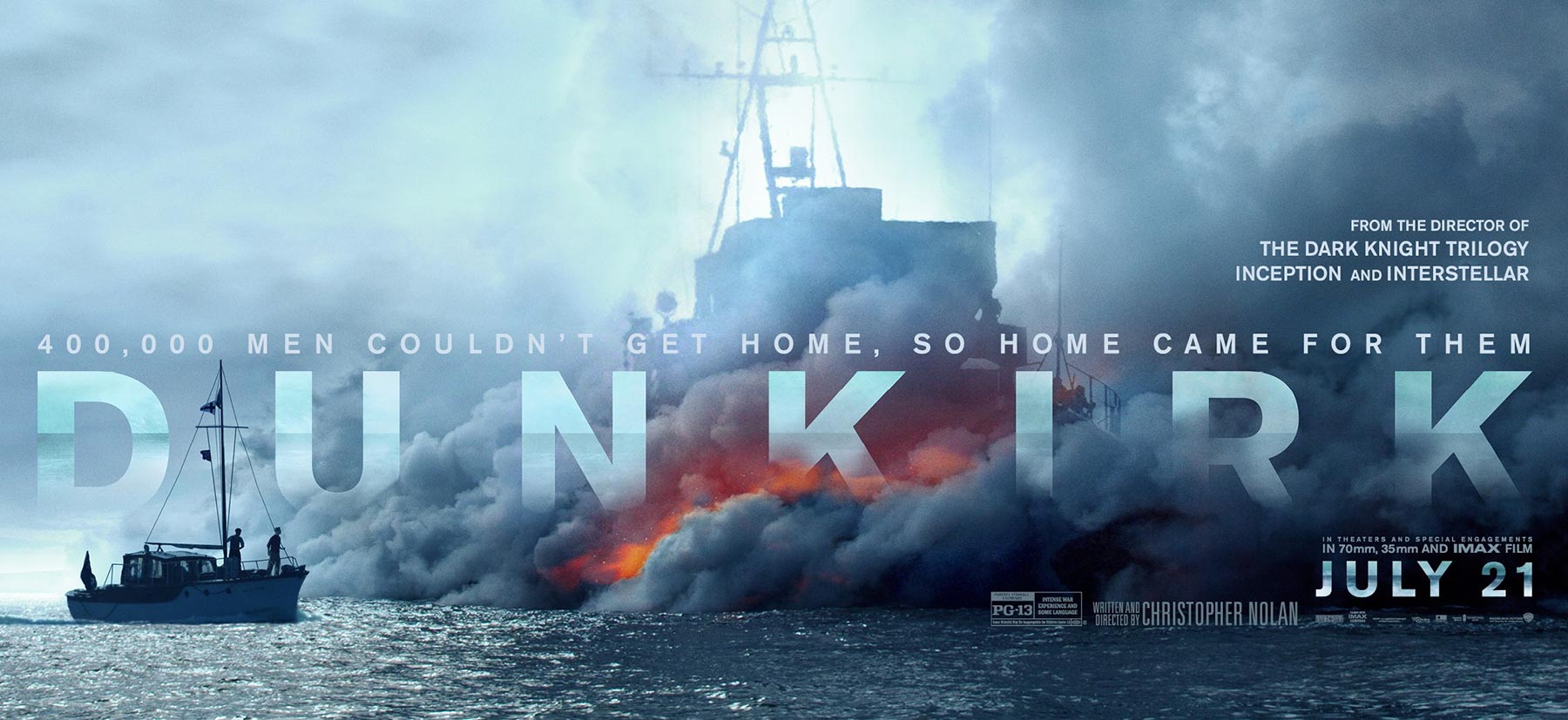I recall being stunned and impressed when I read, at some point after the fact, that the mobilization of rescue boats on the Hudson River on 9/11 evacuated nearly half-a-million people from Lower Manhattan to New Jersey – on Coast Guard vessels, of course, but also on private yachts, tugs. and barges – an operation larger than the exodus of British troops from Dunkirk in 1940.
I thought: the Can-Do Spirit lives! Many thought it dead, but, if so, it was resurrected on that sunny Tuesday: light breaking through on one of our darkest days.
And that light and that spirit shine vividly in Christopher Nolan’s Dunkirk, by far the best film of 2017.

The brief history: At the end of May 1940, more than 300,000 retreating British, Canadian, French, and Belgian forces had their backs against the English Channel with the German army driving in on them. Because of the maritime geography, getting most British Navy ships close to shore was impossible. Besides, the Admiralty had made the terrible, though necessary decision to hold back the main naval force. The situation in Dunkirk seemed so grim that those ships had to be held in reserve against a likely German invasion of Great Britain. . .if, as seemed likely, the soldiers awaiting evacuation were lost.
Notwithstanding that, as one character in Dunkirk says, “We have to get our Army back!”
So the decision was made to mount what seems in retrospect – though prospectively – a kind of reverse D-Day. But the only armada that could be launched to the coast of Northern France this time was mostly comprised of private vessels.
Except for its structural conceits, Dunkirk is similar to many fine war films, such as Saving Private Ryan (1998), A Bridge Too Far (1977), and The Longest Day (1962) – epics, yes, but films that understand that no matter how grand the scope or electrifying the action, character is key – characters brought to life by fine actors.
The cast of Dunkirk is as good as in any film of its kind, with veteran stars (Kenneth Branagh, 56, and Tom Hardy, 39, are two) and newcomers (for instance, Fionn Whitehead, 20, and Barry Keoghan, 24), in an ensemble that suggests how the raw courage of youth must, in the successful prosecution of a war, be complemented by the steely determination of experience.
Cinematographer Hoyte van Hoytema’s camera lingers long and lovingly on the faces of the young men trapped on land and sea and air. It’s these fleeing warriors who are the heart of the film. But Dunkirk’s soul is revealed in the faces, especially the eyes, of three veteran actors: Branagh, Hardy, and Mark Rylance: Branagh as the commander of the evacuation; Hardy an RAF fighter pilot; and Rylance a civilian mariner who joins the rescue flotilla.
A few reviewers of Dunkirk have objected to its lack of “political” context: no mention is made of Nazis or Hitler and maybe only one or two uses of the word “German.” Now it may well be, given the state of American education, that many who see the film will be unaware of its historical background. That’s too bad, but criticism about the film’s lack of political exposition misses the fact that Mr. Nolan has chosen to tell the story from the soldiers’ and sailors’ point of view. And I dare say the real people fleeing Dunkirk and those rescuing them were not thinking about “politics,” only about survival – achieving it or aiding it.

One critic complained that Winston Churchill and the Why-We-Fight casus belli of World War II are missing in Dunkirk. This amazes me, especially so because Churchill is literally given the film’s last words. A rescued soldier reads aloud the Prime Minister’s famous speech to Commons on June 4, 1940, which ends:
We shall fight on the beaches, we shall fight on the landing grounds, we shall fight in the fields and in the streets, we shall fight in the hills; we shall never surrender. . .until, in God’s good time, the New World, with all its power and might, steps forth to the rescue and the liberation of the Old.
To be sure, Dunkirk is in some ways a taxing film, especially so at the start. In the film’s opening sequences, Mr. Nolan literally and quickly establishes its structure, which, like Caesar’s Gaul, is divided in three parts and shown in captions:
I. The Mole: one week
II. The Sea: one day
III. The Air: one hour
(A “mole” is a makeshift jetty constructed as a means for getting evacuees far enough from shore to allow them to climb aboard shallow-draft rescue craft.)
Each of these elements of the story overlap and the only one that is almost real time is The Air.
You don’t have to be a film student to know that “cross-cutting” scenes in a film – going from one bit of action to another in more-or-less the same time frame – is done to build tension and to condense and propel the narrative. We know that much of the action depicted in the three sections of Dunkirk is happening simultaneously, but there’s no way to depict all three on screen at once, failing some three-way, spilt-screen technique that would have been more confusing – and distracting – than Mr. Nolan’s. But he has told us at the start that there will be these separate, occasionally intersecting, plot lines going on, and 10 or 15 minutes in, you relax and accept it, although a few flashback sequences can throw you – at least at first.

And there are some scenes, long an silent, that seem plucked from a Sixties New Wave film – very Nouvelle Vague. But it seems to me that the disorientation of the viewer is very effective in simulating the disorientation of the soldiers.
The aerial sequences are stunning, and, although I won’t reveal why, the film’s penultimate scene of a Spitfire landing on the beach at Dunkirk is simply sensational. My last scribbled note in the small yellow pad I had with me at the screening is: “Tom Hardy wins the war!”
___
Dunkirk, written and directed by Christopher Nolan, is rated PG-13. Unlike Steven Spielberg in Saving Private Ryan, which was rated R, Mr. Nolan avoids gore. There are shocks but no splatter. In addition to those already mentioned, the cast includes (alphabetically) Aneurin Barnard, James D’Arcy, Tom Glynn-Carney, Jack Lowden, Cillian Murphy, and Harry Styles. I saw it in IMAX – visually stunning and audibly deafening.















